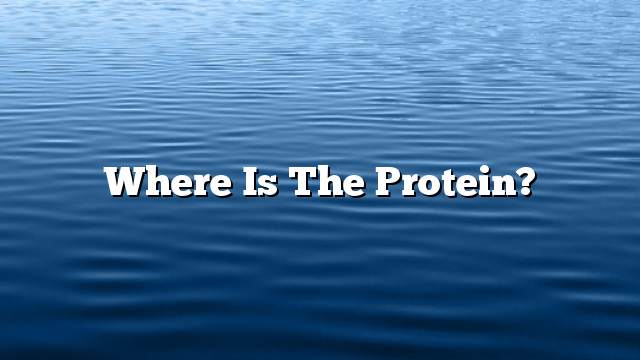Nutrients
The human being is a complex organism, whose body can not form the elements it needs. It resorts to the food it supplies, as do other organisms. Food is the source of all the nutrients the human body needs to build its cells and make up for its damage. And the maintenance of its tissues, scientists have classified the needs of the human body of these nutrients in several ways, and they placed in six groups of food necessary for the human to get them to become food balanced.
Protein
It is also called an interferon, a complex organic compound with large molecules consisting of a series of amino acids, amino acids consisting of carbon, hydrogen and oxygen, added to nitrogen by about 16% and some contain phosphorus and sulfur. Protein is the organic material essential for building cells of the human body and the growth of its tissues, and the word protein derived from the Greek language and the meaning of the first place, or comes first. The proteins are made up of amino acids that differ in structure and size but are characterized by the presence of an amino group NH2 and a group of carboxylic acids (COOH), which bind to each other with peptide bonds, the link between the amino acid and the other amino acid. Twenty-two amino acids are necessary for food, It must be available daily in foods eaten by humans because they are essential in the performance of protein functions in the body.
Protein classification
There are two types of protein classifications, the first type according to the amino acids, and the second type by the source of plant, or animal, and are as follows, containing the amino acids.
- Whole proteins: dependent on growth and preservation of life when used as the sole source of protein. It contains all essential amino acids such as milk protein, eggs and soybeans.
- Partially incomplete proteins: They can maintain life but are not sufficient for normal growth such as: wheat protein, barley protein.
- Incomplete proteins: They can not sustain life if eaten alone, such as corn protein.
Proteins by Source:
- Animal proteins: such as meat, eggs, and milk.
- Plant proteins: such as wheat, legumes, vegetables.
Sources of protein
There is protein in the nuclei of cells, in enzymes, in some hormones, as in the fluids surrounding the cells of the body, and is found in food in abundant quantities and foods containing protein are:
| Food category | Quantity | Protein content in grams |
|---|---|---|
| Cheddar cheese | Thirty grams | 7.1 |
| Cheese is sweet | One hundred grams | 21 |
| chicken eggs | One hundred grams | 12.8 |
| Sheep liver | One hundred grams | 20 |
| sheep meat | One hundred grams | 18.4 |
| Chicken | One hundred grams | 19 |
| Dry beans | One hundred grams | 22.6 |
| lentils | One hundred grams | 23.7 |
| Hazelnut | One hundred grams | 23.5 |
| chickpeas | One hundred grams | 19.2 |
